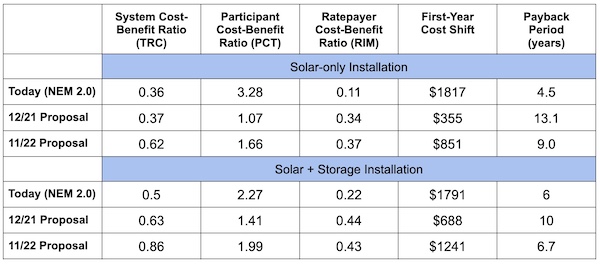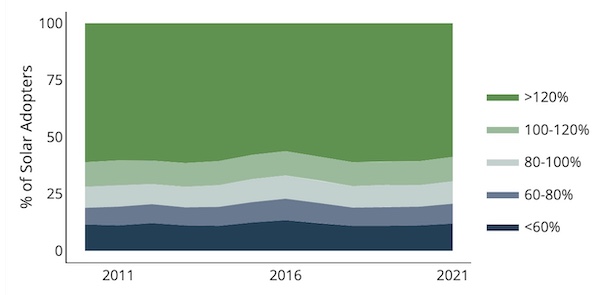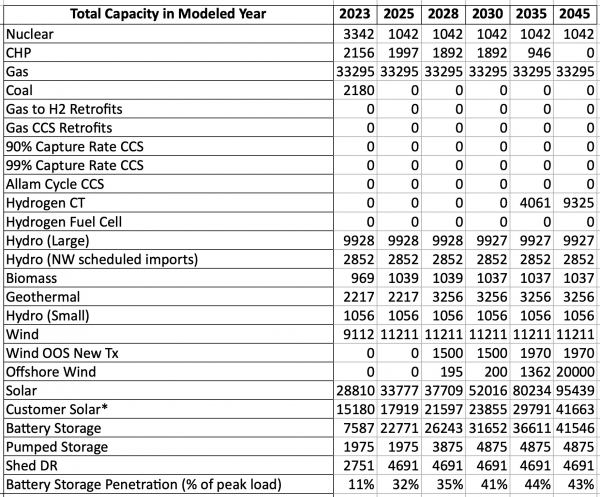Are any of you getting sticker shock when shopping for holiday flights? Yeah, me too. It made me wonder what it would be like if California ran an airline the same way it runs its utilities…

What if California ran an airline the same way it runs its utilities?
Imagine that a few months ago you booked a low-cost flight on Bear Air from SFO to Lisbon for only $650 round-trip, a great deal on an off-season red-eye. But now you realize you can’t make it. When you return the ticket, Bear Air informs you that they have a special “Golden Bear” exchange program for frequent travelers like you. You pay $400/year and in return would get to exchange any tickets for “credit miles” which you can apply to other tickets. For example, the round-trip to Lisbon is 11,362 miles, so you would get credit for that many miles. Whenever you need to fly for the next 12 months, your tickets are free as long as you don't travel more than 11,362 miles (unless you’ve exchanged other tickets). You can cash out whatever’s left at the end of the twelve months. You can exchange as many tickets as you want, as long as you’re enrolled in the program.
You listen carefully, scratch your head, do a little calculation, and wonder who exactly Bear Air is employing in its accounting department. Then you jump on the offer, pay the enrollment fee, and bank the 11,362 credit miles, because you are going to save thousands on your air travel. Later that week you get a last-minute ticket to see family in Minneapolis over Thanksgiving, a round-trip that would have cost $500 but is easily covered at just 3178 miles. Then you splurge on a spring break flight to Hawaii (4734 miles) with some college buddies, snagging business-class seats that would have been $2000. You just got $2500 worth of flights for your $650 returned ticket, and you still have 3450 credit miles left.
You continue doing this throughout the year, buying low-cost flights, returning them for credit miles, and then cashing in those miles for pricier last-minute, holiday, or business-class flights. In fact, everyone who is enrolled in the program does the same thing, and more people keep enrolling because it’s such a good deal.
As you can imagine, Bear Air immediately loses money on this program, and more as enrollment grows. Ironically, it is losing money on what should be some of its best customers. The airline has to repeatedly raise fares to cover its costs. Customers in the Golden Bear program are largely unaffected by the price increases since their flights are covered by these ultra-cheap exchanges. But people who aren’t in the program -- who don’t fly much or who can’t afford to enroll -- are forced to pay increasingly exorbitant rates when they do need to travel. Bear Air’s prices quickly become uncompetitive and it would start hemorrhaging customers if it weren’t a state-run monopoly. Californians are forced to use it and many are being squeezed dry, especially those who can least afford it.
This is, and I’m not exaggerating, how California runs its rooftop solar program. Customers with solar rooftops freely exchange their excess low-value solar power for high-value late afternoon and evening power. Installers will encourage homeowners to maximize their rooftop to save even more. All of this costs utilities a lot of money. PG&E’s solar customers pay only 18% of the costs they incur. Utilities are losing billions of dollars, and more each year as more people adopt rooftop solar. They are forced to raise rates to cover their costs. This results in a major equity problem since the rate increases primarily affect non-solar customers who are more likely to be low-income and renters. Unfortunately, none of these customers can just “stop flying” -- electricity is an essential utility. Instead they get locked into higher rates that they can ill afford.
No airline in their right mind would operate this way, and California utilities don’t want to either. But their hands are tied because they are regulated by California and to date California has insisted that they reimburse rooftop solar customers in this manner. The utilities have been loudly complaining and the ratepayer advocates have been loudly complaining, all while hourly electricity costs have gotten ever more differentiated. Both parties have been saying that they want to manage solar the way that airlines actually manage ticket exchanges, namely crediting customers based on the dollar value of the energy (miles) being exchanged rather than on the number of kWh (miles) being exchanged. That is, they want net billing and not net metering.
The state responded to the clamor in 2016 by, well, doing nothing. The solar industry convinced the California Public Utilities Commission (CPUC) that net metering was working well and they should just gather more data. During that time, large amounts of utility-scale solar were deployed, making midday energy worth even less. And more customers signed up for the good deal that was rooftop solar. As a result, utilities lost even more money on rooftop solar customers. By the time 2021 rolled around, the data was really not good, and eventually most everyone agreed that indeed net billing was a better idea than net metering.
But there were still many things to negotiate. When a rooftop solar owner contributes a kWh to the grid, how much should they be credited? And when they consume a kWh from the grid, what should they be charged? The latter seems like it should have an obvious answer -- we all pay for power, so any customer should just pay the going rate. But the utilities don’t charge what power actually costs, which is much more in the evening than midday. Time-of-use rates are a help but still aren’t differentiated enough. This means that customers aren’t doing enough to use midday electricity and avoid evenings. (1)
What the CPUC wants to do is align rates with costs. If a customer puts a kWh on the grid, then they should be reimbursed based on the “avoided cost”, or what the grid would have had to pay if it didn’t get that kWh. (2) Moreover, if a customer consumes a kWh from the grid, then they should have to pay what it costs to produce that kWh. By aligning rates with costs, the customer is encouraged to make efficient use of energy, using more when it’s cheap and less when it’s expensive. A solar customer would be strongly incentivized to use their solar energy when it’s produced and to minimize evening use and/or get a battery.
Indeed, this is the proposal that the CPUC released earlier this week, which they are referring to as “Net Billing”. Solar customers who export energy to the grid will be credited with the “avoided cost” of that energy. Solar customers who import from the grid will be charged with something more closely resembling the actual cost of the energy. PG&E will use its soon-to-be-launched “Electric Home rate” for these customers, which looks like this:

PG&E’s new “Electric Home” rate, shown above, will apply for new solar customers when they consume electricity from the grid. It is designed to better reflect the hourly and seasonal variation in electricity costs. Rates are lower than E-ELEC across the board except for 4-9pm in the summer, when they are considerably higher.
Faced with this change, solar companies asked for a gradual transition, or “glide path”, so that they can adapt their business. The CPUC agreed to a 5-year transition period, with additional payments to solar customers that are funded by ratepayers. The CPUC acknowledges that this will prolong the cost shift and potentially increase bills for non-participants. But they point to a state law, often cited by the solar industry, that directs the CPUC to ensure that the rooftop solar industry “continues to grow sustainably”. The CPUC concludes that they need to balance objectives of grid efficiency and equity with this need to grow the industry. This reasoning is repeated throughout the proposal, for example in discussions about the payback period. The authors acknowledge that while a longer payback period for solar installations might improve equity and reduce bills, their hands are tied because the rooftop solar industry needs to “grow sustainably”, and the payback period impacts solar purchase decisions. Section 8.2.1 (pages 55-57) of the proposal has more discussion on this requirement to grow the rooftop solar industry.
The CPUC’s proposal also reverses parts of an earlier proposal (from December 2021) that would have further reduced the cost shift by adding an $8/kW “grid benefits charge” to cover fixed costs, instituting a $10 minimum bill, and revising rates for customers whose systems are paid off. Rather than moving forward with these changes, which the solar industry strenuously objected to, the CPUC omits them and defers to a newer proceeding (July 2022) that is considering an income-dependent fixed charge for all customers. (3) It remains to be seen if the solar companies will fight the charge in that proceeding as well. (4)
The end result, if this new Net Billing proposal goes through, is a grid that remains inefficient and inequitable, where lower-income non-rooftop customers continue to subsidize higher-income rooftop customers.

Efficiency and equity metrics for residential rooftop solar for PG&E, non-CARE rates. The program costs the grid more than it benefits the grid (TRC < 1), the solar participants do well (PCT > 1), the general ratepayers do poorly (RIM < 1), and even with this latest proposal, each solar customer costs the grid around $1000 in just the first year.
The solar companies say that this new compensation structure will hurt their business and that the transition is too abrupt. Ratepayer advocates are dismayed that unfair rates will be baked in for years to come. I for one am pretty shocked that with all the state’s focus on equity, and its explicit acknowledgement about how unfair these rates are, the CPUC nevertheless is proposing to continue a sizable cost shift. While the solar industry claims that the best way to rectify this inequity is to deploy solar for low-income households, they simply are not getting access to solar.

The colors in this chart show the percentage of Area Median Income for solar customers. Only 30% of solar adopters in California have incomes below median, and that ratio hasn’t changed much in the last ten years. This data does not account for size differences, which would indicate an even worse distribution. (Panels on a multi-family building will provide much less economic benefit per household, for example.) Source: Lawrence Berkeley Laboratories (2022)
In my view, the evolving proposals in this proceeding show the power of monied, vested interests with powerful lawyers, lobbyists, and legislators on their side. I can only hope that the next rate proceeding goes better for the average ratepayer.
Note: The new solar rate structure will not impact households in Palo Alto, which has its own utility setting its own rates. It will affect all customers in PG&E, SCE, and SDG&E territory when it goes into effect, likely some time next year if approved, but with a five year transition period.
Notes and References
1. This is even worse in Palo Alto, where we live in the dark ages with no smart meters. We pay flat rates for a very non-flat commodity, and as a result use electricity very inefficiently.
2. Palo Alto made this change years ago. As a small municipal utility with many rooftop solar customers, it saw the writing on the wall and knew it wouldn’t be able to keep rates low if it continued to overcompensate solar customers.
3. One proposal is to greatly reduce per-kWh rates and instead levy a new income-graduated fixed charge, as I have written about before. This “Demand Flexibility” proceeding is also looking at dynamic rates that reflect real-time grid conditions and “smart” appliances that can optimize their use around those rates to minimize electric bills (and emissions). I will write about it in a future blog post.
4. The Solar Energy Industries Association (SEIA) says “SEIA believes that fixed charges have a role to play in California’s future rate design, but that role should be a limited one. In the long run, there are very few utility costs that are truly fixed and that do not vary with customers’ usage.” (In contrast, some economists have said that most of our electricity rates in California are fixed costs that should be moved out of rates.)
5. In case you are wondering, the solar industry did not get everything they asked for. They wanted higher compensation for solar exports (power sent from solar panels to the grid). They wanted a shorter payback period. They wanted models to incorporate a higher cost for solar installations. In almost all of these cases the CPUC picked a middle ground between what the solar companies were asking for and what the ratepayer advocates wanted.
6. One interesting thing that caught my eye in the proceeding was the discussion about solar + storage. All parties agreed that the solar industry should transition from solar-only installations to solar-plus-storage. However, the solar industry pointed out that it will take a while, citing “the still relatively high price of storage, increased demand for storage resources in light of growing electric vehicle adoption, outdated building codes and standards, and limited contractor expertise.” That sounds about right to me. I think our best bet on storage may be EV batteries, but it’s not clear to me if they can take daily cycling (e.g., storing midday solar for evening use) vs just occasional use during times of grid strain or outages. And supporting them still requires a lot of training and work on the distribution grid.
7. Another interesting thing to me was a discussion about land conservation. The solar industry argued that they weren’t getting enough credit for the land they are saving by using existing roofs for solar. Without rooftop solar, utility scale solar would need to expand and use more land. But the California Wind Energy Association argued that less rooftop solar would just mean that more baseline resources like wind and geothermal get more runtime, and the CPUC found the land conservation argument to be unconvincing.
Current Climate Data (September/October 2022)
Global impacts, US impacts, CO2 metric, Climate dashboard
Comment Guidelines
I hope that your contributions will be an important part of this blog. To keep the discussion productive, please adhere to these guidelines or your comment may be edited or removed.
- Avoid disrespectful, disparaging, snide, angry, or ad hominem comments.
- Stay fact-based and refer to reputable sources.
- Stay on topic.
- In general, maintain this as a welcoming space for all readers.




